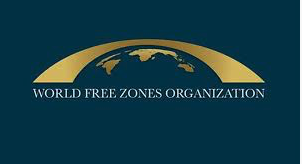Tempo de leitura: 2 minutos
In 2020, the People’s Republic of China (PRC) became the top global Foreign Direct Investment (FDI) destination. As the world’s second-largest economy, with a large consumer base and integrated supply chains, China’s economic recovery following COVID-19 reassured investors and contributed to higher FDI and portfolio investments. In 2020, China took significant steps toward implementing commitments made to the United States on a wide range of IP issues and made some modest openings in its financial sector. China also concluded key trade agreements and implemented important legislation, including the Foreign Investment Law (FIL).
China remains, however, a relatively restrictive investment environment for foreign investors due to restrictions in key economic sectors. Obstacles to investment include ownership caps and requirements to form joint venture partnerships with local Chinese firms, industrial policies such as Made in China 2025 (MIC 2025) that target development of indigenous capacity, as well as pressure on U.S. firms to transfer technology as a prerequisite to gaining market access. PRC COVID-19 visa and travel restrictions significantly affected foreign businesses operations increasing their labor and input costs. Moreover, an increasingly assertive Chinese Communist Party (CCP) and emphasis on national companies and self-reliance has heightened foreign investors’ concerns about the pace of economic reforms.
Key investment announcements and new developments in 2020 included:
On January 1, the FIL went into effect and effectively replaced previous laws governing foreign investment.
On January 15, the U.S. and China concluded the Economic and Trade Agreement between the Government of the United States of America and the Government of the People’s Republic of China (the Phase One agreement). Under the agreement, China committed to reforms in its intellectual property regime, prohibit forced transfer technology as a condition for market access, and made some openings in the financial and energy sector.
China also concluded the Regional Comprehensive Economic Partnership (RCEP) agreement on November 15 and reached a political agreement with the EU on the China-EU Comprehensive Agreement on Investment (CAI) on December 30.
In mid-May, PRC leader Xi Jinping announced China’s “dual circulation” strategy, intended to make China less export-oriented and more focused on the domestic market.
On June 23, the National Development and Reform Commission (NDRC) and Ministry of Commerce (MOFCOM) announced new investment “negative lists” to guide foreign FDI.
Market openings were coupled, however, with restrictions on investment, such as the Rules on Security Reviews on Foreign Investments – China’s revised investment screening mechanism.
While Chinese pronouncements of greater market access and fair treatment of foreign investment are welcome, details and effective implementation are still needed to ensure foreign investors truly experience equitable treatment.






Os comentários foram encerrados, mas trackbacks e pingbacks estão abertos.